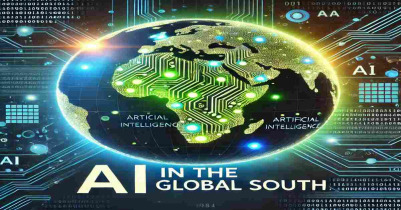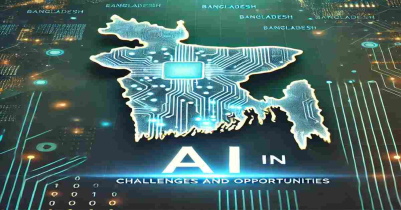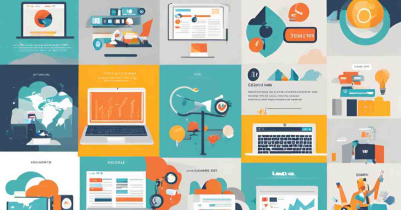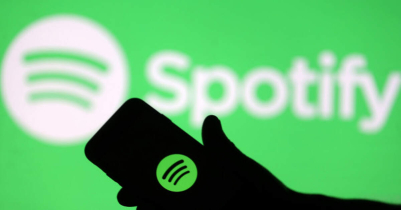Eye News Desk
Meet your new chatbot co-worker

With the rise of bots such as OpenAI's ChatGPT and Google's Bard, artificial intelligence has unleashed more than $5 trillion worth of hype into the Nasdaq-100 Index since January. While previous AI algorithms were typically relegated to background operations—determining, say, the content of your social media feed—these new so-called generative AI tools let users interact directly to create something from scratch. Trained on vast collections of data, they're capable of responding to users' prompts with reams of original text, images or code within seconds.
If proponents are to be believed, that augurs sweeping change for business, with the potential to replace whole swaths of the workforce and turbocharge productivity for those who remain. But chief executive officers and employees alike are unsure what to do with it, says David Waller, a partner at consulting firm Oliver Wyman. "Most companies are panicking because they feel like they must be the ones who are behind—everyone else is doing something behind the scenes that is grand and impressive," Waller says. "And many of these people are finding themselves having to answer to their board of directors as to why they're also not doing things that are grand and impressive."
The good news for those people: Most companies are still very much figuring it out. That's partly because AI—like the steam engine, electricity or the internet—has the potential to affect everything, transforming the entire economy. But as with those earlier technologies, it won't happen overnight. "The only way to really figure out how to use it is to use it," which takes time, says Ethan Mollick, a professor at the Wharton School of the University of Pennsylvania.
Lynn Arsenault, founder of a grant writing company outside Boston, put that advice into practice in her own work, though not without trepidation. "I was kind of intimidated to even play around with it, because there's this question of whether my role as a grant writer will become obsolete in the next few years," she says.
When she finally opened up ChatGPT, she quickly discovered its potential—and its limits. When she's writing the first draft of a proposal, she feeds the chatbot information to quickly get words on the page. That, Arsenault says, helps her counteract the writer's block she sometimes suffers, saving her about an hour on what might typically be a five-hour project. She's also started feeding copy back into the bot after it's done, to make it cleaner. She says other small-business owners she knows use it for composing emails and generating marketing copy.
But Arsenault says the AI tool often falls short, with first drafts often coming off flat and lacking the nuance necessary for describing the complex work her clients undertake. And, she says, it turns out that what makes a good grant writer is much more than just writing; it's crucial to develop strong relationships with donors and build encyclopedic knowledge of grant opportunities that may not be widely advertised. And of course, Arsenault says, since the chatbots are prone to error, she has to be vigilant in finding any mistakes the tool might introduce.
Beyond ChatGPT, an explosion in workplace technology is underway as tech companies look to capitalize on the huge market potential of AI-powered software. Dozens of programs tailored to specific industries are already available: Jasper is geared toward marketing professionals, Synthesia is designed for video editors, and Casetext is aimed at lawyers (and was recently acquired by Thomson Reuters Corp.). AI is also set to start turning up in some of the most staid workplace software, such as Microsoft Corp.'s Office 365.
This profusion of options can be overwhelming, but Wharton professor Mollick says apps marketed for specific tasks often rely on the same underlying algorithms that power ChatGPT. So he suggests starting with that program directly (assuming your corporate overlords allow it) and then figuring out any specialized tools you might need. A few hours using it in various aspects of your job will give you a good sense of what it can and cannot do. If you think of it like traditional software that runs as programmed and always gives you the right answers, you'll be disappointed.
"A lot of things will frustrate you, and then it'll be kind of miraculously good," Mollick says. It's better, he says, to treat ChatGPT like an intern: It will need guidance and some hand-holding, but once it's on its way it can be a big help. "It works really well when you're interacting with it like a person," Mollick says, "where you're expecting potential mistakes and you're expecting some weirdness."
source : Bloomberg
Read More
- 32 megapixel camera new phone Tecno Spark 10 Pro
- Google Bard now in Bangladesh
- Samsung Galaxy A54 5G: A perfect price fit!
- Tottering from Twitter to Threads
- Elon Musk`s SpaceX hires 14-year-old Bangladeshi-American Kairan
- Refreshing only increases the speed of the computer?
- Twitter lost a huge number of subscribers
- boAt products now officially available in Bangladesh
- The Godfather of AI quits Google; warns of impending danger
- 4 websites to track Cyclone Mocha in real-time






























